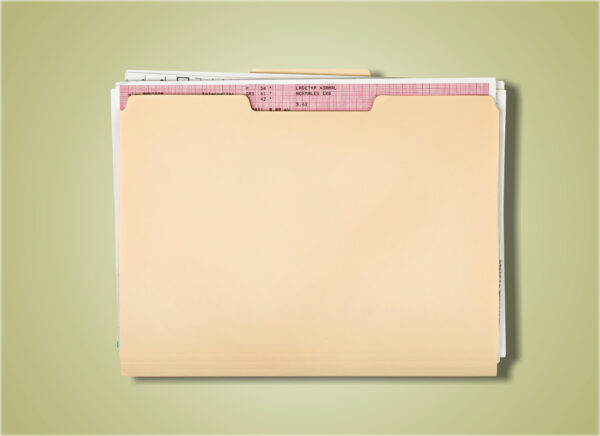Digital conversion projects can be intimidating, but that doesn’t mean that they’re not manageable.
To improve your chances of success, and also keep your stress levels down, utilize the Building Block Approach to digitization. This style of project execution encourages having a defined outcome and plan, but breaking it into its smaller pieces and reevaluating the project as you move through each step, thereby course correcting as needed with new information and as reality hits.
In this article we’ll describe the Building Block Approach, provide some upsides and downsides, and illustrate the method with an example project.
What’s the Building Block Approach?
The Building Block Approach involves digitizing content at the most basic level first and building a solid foundation that you can add to as your project becomes more complex.
This approach is a bottom-up, modular strategy; instead of having 100% of the solution right away, you can start with a simple idea—call it a 70% solution—and then add pieces and adjust them as you see how they work.

Here’s a food analogy: baking is super precise, and if you change any little measurement, it turns out terribly. You have the 100% plan from the start, and it better all go exactly as planned, no changes!
The Building Block Approach is more like cooking: sure, you have an end result in mind (steak with vegetables), and you might have a recipe, but you’re taking it a step at a time.

Put the seasoning on the meat and let it sear for a bit, then test and adjust. More salt! More paprika! A hit of sage! And maybe you want to throw in asparagus instead of broccoli, no problem. You have a solid idea of what you want to end up with, but you don’t let that stop you from tweaking as you go and rolling with what’s best as you see it, rather than blindly sticking to a plan.
How the Building Block Approach Simplifies Digitization Projects
The building block approach has the power to reduce large, sometimes intimidating, goals into easily manageable steps, just by starting with a simple beginning.
The first step in the building block approach is always to replicate your records—just as they are now, but in a digital format.
Anyone who’s worked on a large project knows that complexity can be a barrier to simply getting started—questions tend to spiral out of control, leading to new ideas, uncertainty about the requirements, and significant delays.
With this in mind, starting with a simple idea limits complexity in the early phases of the project, giving you the opportunity to test your ideas against your end result, then adjust based on what you find. With the building block approach, your end result isn’t set in stone; instead, you have the flexibility to create the most effective end result for your unique digital scanning job.
Upsides & Downsides
Upsides

Downsides
Example of the Building Block Approach
Let’s look at a real-world example of how the building block approach might be implemented.
Say you have 200 bankers boxes of student records, each containing anywhere from 50 to 150 manila folders that each hold records for one student, and a former student named Adam Barry requests his transcripts. Currently, you would go into the storage area, find the box labeled “A-Be,” pull it out, and flip through the folders until you find one marked “Barry.” Once you’ve found the folder, you pull it out, find the record you need, scan it or make a copy, and send it to Mr. Barry.
If we took the building block approach to digitizing, we would start by immediately replicating what you do now. That doesn’t necessarily mean indexing all 20 pages of Mr. Barry’s files based on different sections, but instead scanning all the records in each physical folder and organizing them by what box they came from. This way, once the records are in digital, all you need to do is find the “student record” document type, click into that folder, and then find the folder labeled “A-Be.” Then you would scroll down until you saw “Barry.” Because the building block approach favors keeping things simple, you’ll have a single 20-page PDF with all of Mr. Barry’s records, which you can then use to pull out the pages you need.
Sound simple? It should – after all, you’re just replicating what you already do, following a familiar process in the digital format. But let’s say we want to make things even easier.
Since you now have the digital folders of the physical boxes, and you already have the full file of each student based on their physical folder, it’s a simple jump to go to a more detailed and granular indexing method. Although the physical boxes were labeled by whatever could fit in them, such as “A-Be” or “Fa-Fr,” now that they’re digitized they can be reorganized into simply A, B, C, and so on. Then each student’s file can be organized more logically based on the first letter of their last name.

But you can do even more. For example, maybe there are a few different types of files within each student’s folder. If you wanted to separate them so you could more easily, say, send transcripts, you could easily go back to those multi-page PDFs and break them up based on various criteria, labeled automatically by what’s inside.
As you’re probably starting to guess, the possibilities are endless. Whatever you want to do with your files, digitization can make it easy – it all depends on what kind of foundation you set for your project. When you start simple, you’ll be able to do more later on and create better results once you see how something works. Instead of shooting for the moon and falling far short, or making things too complicated early on, you can start simply and continually improve at each step of the project.
Next Steps
Reach out to us today! Click the “Get Your Quote” button below, fill out the form, and we’ll quickly reply to you to discuss your project.
Further Reading
How To Prepare For Your Paper Scanning Project
Getting ready to start a paper scanning project? Here are four ideas to help you prepare and be ready to make your project a success.
Digital Indexing: Structured vs. Unstructured Data
Naming your digital files, or “indexing” them, is an essential part of any good digitization project. Learn about the two most common methods, unstructured and structured indexing, and how to implement them in your project.
5 Misconceptions About Digital Conversion
Digital scanning projects can seem like a mystery, and mysteries create confusion. To clear up the confusion, we identify 5 common digitization misconceptions and describe how to successfully navigate your digital scanning project.

